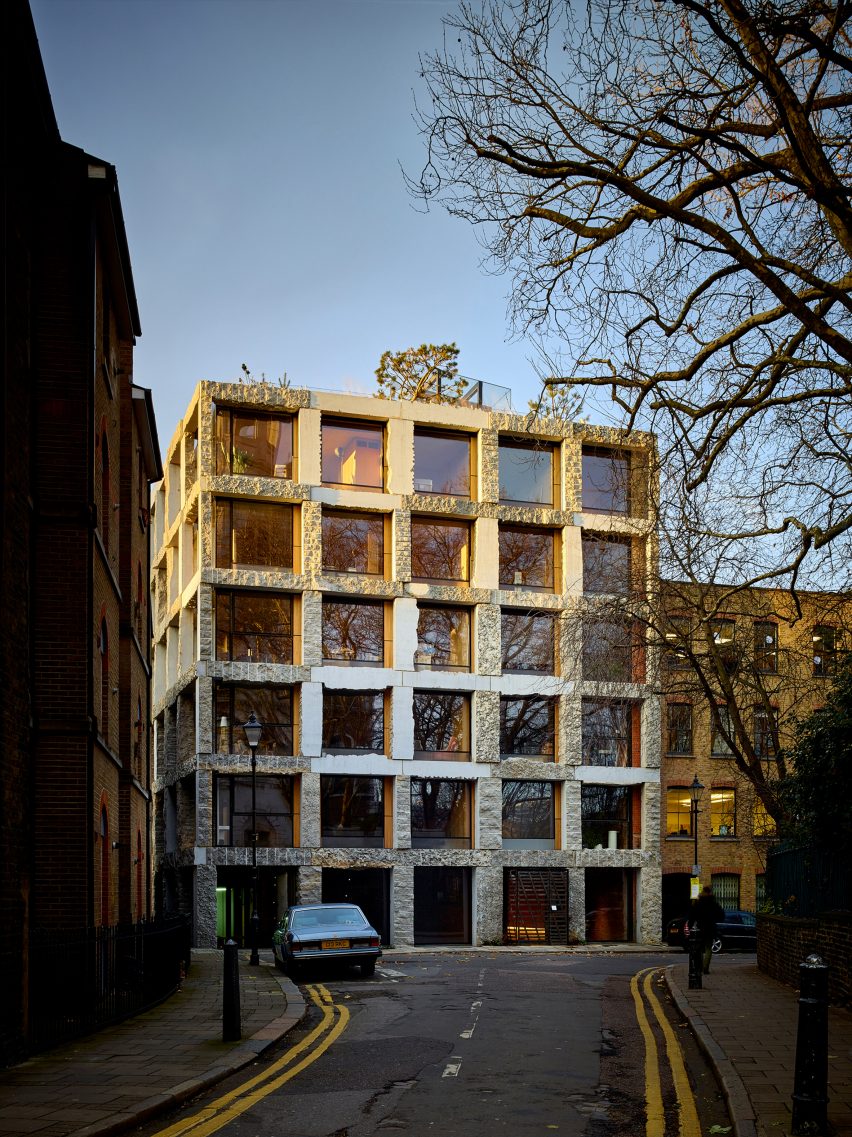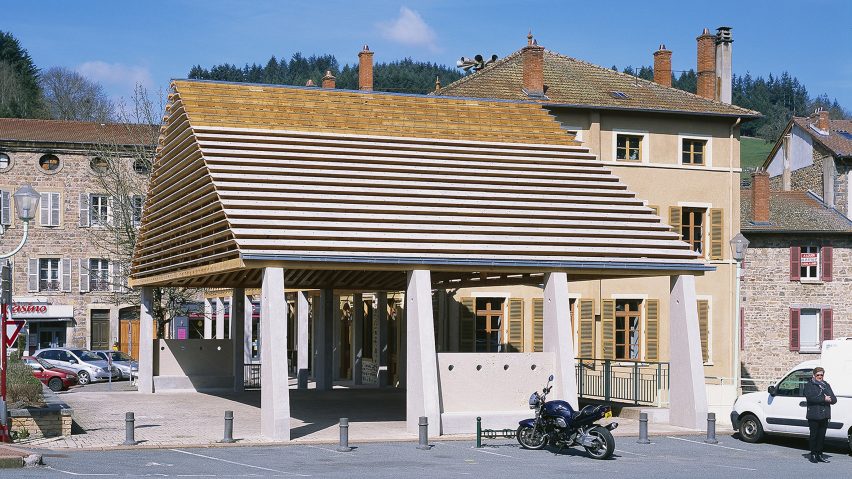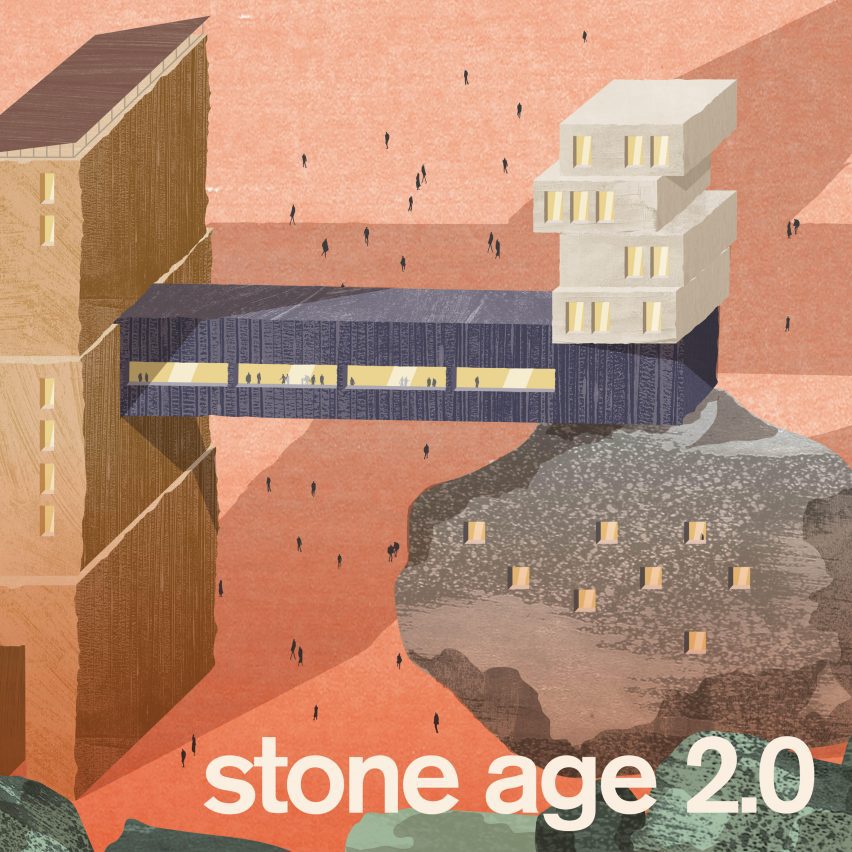
Architects "can develop a new language" with structural stone says Aurore Baulier
ACAN Natural Materials Group co-ordinator Aurore Baulier calls on architects to embrace stone's natural qualities and reintroduce the material into their toolkits in this Stone Age 2.0 interview.
"Obviously, you can shape concrete into all these fancy forms, but if you're clever with stone, you can do incredible stuff," Baulier told Dezeen.
"Stone can be used for foundations, but also as a superstructure," she continued. "A beam can actually be stone instead of steel, minimising its carbon footprint."
"Swapping traditional materials – or materials that are traditional now – for stone can be done."

Baulier, who is the director of London studio Atelier Baulier, spoke to Dezeen as part of our Stone Age 2.0 series, which is exploring the material's potential to be a modern construction material.
She advocates for the use of structural stone as part of Architects Climate Action Network (ACAN), where she coordinates the Natural Materials Group.
The group is calling for an industry-wide shift to natural building materials, such as stone, to help minimise the industry's carbon footprint and wider environmental impact.
According to Baulier, the use of stone in construction has similar benefits to timber, another biomaterial that is being revived as a structural material.
Stone should be harnessed for its strength
A key benefit of stone, unlike the majority of building materials, is that it can be used for construction in its natural state. At the end of a building's useful life, it can also be repurposed or simply returned to the ground.
"You just dig the bed and just slice the stone or cut into the blocks you need," explained Baulier.
"If you don't need the stone anymore, it's just returned to the earth, and that's it," she continued. "If it's done responsibly then it can just be returned as a part of nature."
Another advantage of stone is that it has a naturally high compressive strength. Combined with its moisture resistance, this ensures its durability and potential to "age gracefully" as a construction material – as demonstrated by long-lasting Roman ruins.
To contextualise this, Baulier highlighted the energy-intensive process of making concrete, which requires stone, fresh water and sand.
"To make concrete, you take a stone like Portland stone that has a compressive strength of about 200 Newtons per millimetre square, you crush it, you burn it, you do all these processes that are really energy-intensive, and you end up with the material that is about 40 Newtons per millimetre square," Baulier explained.
This gives rise to a material that is "about 20 per cent of the strength" of stone – a fact Baulier described as "mad".
Stone "lost its purpose"
Baulier largely blames a lack of awareness about structural stone for its absence in the industry today – something she is battling first-hand in her own work as an architect.
"I haven't been able to specify stones as a structural material myself yet, but it's definitely something I've been looking into," she said.
"You need the right team, and then you need a structural engineer on board, you need a client on board, and then you need builders on board. It's a whole team. It takes time."
She explained this lack of awareness has also led to a misconception that stone is an expensive building material – a fallacy that has been reinforced by the way it is most commonly used today.
"What is really interesting is that stone is seen as a very expensive material because of over the last 70 years or 100 years, it came away from being a load-bearing material to veneer on a building," she said.

Additionally, it is often manufactured to "remove any so-called imperfection", driving up costs.
"If you use everything and embrace the so-called imperfection, then it becomes a very cost-effective material," she explained.
"It's just lost its purpose, it's not decorative," she explained. "It's a really diverse material and really strong, so it should be used for what it is."
"Also, it's much more sustainable to use all the stone available rather than selecting and discarding."
To help raise awareness of the value of stone beyond ornament, Baulier and ACAN's Natural Materials Group coordinated a video with experts on the material. This forms part of a wider video series led by ACAN where experts share insights into natural materials.
Simultaneously, the team is developing a booklet with "typical architectural details" for more specific natural materials, such as stone, intending to give "confidence to architects, builders and homeowners to use them".
"As we see more and more stone and natural materials out there, I think people get a bit more interested and excited and have more confidence. So it's all about awareness," Baulier said.
"[Stone] suits all scales," she continued. "Everywhere in the world, people have been building small stone sheds and giant stone houses, I think it's a very versatile material."
"Instead of having a steel beam, why don't we have a stone beam? It's an incredible feature."
Using stone in hybrid structures "even more sustainable"
A form of stone construction Baulier is advocating for is stone "bricks". She believes these can be used in place of regular clay bricks, which require a more energy-intensive manufacturing process.
"Some quarries have started developing a brick that is literally a stone brick the size of a clay brick, so it's a really easy shift for people to actually move from away from a clay, which requires a lot of processing and fire and is energy-intensive," she explained.
"Obviously, you still have the mortar issue, which is most of the time cement because it dries faster, but if everyone were to move from clay brick to stone brick, that would be a really good way to start cutting the carbon emissions in the built environment."
Yet, for her, the most exciting and resourceful way to reintroduce stone into the toolkits of contemporary architects and builders is in tandem with timber as a hybrid structure.
"We need to build in this in the world but we have to make sure we don't use too much material," Baulier explained.
"Just because you can do a solid wall in stone doesn't mean you should be doing it," added Baulier. "A better combination is to start actually having hybrid structures with timber and stone."

For example, she said a lightweight timber structure could be married with stone foundations and slabs. According to Baulier, this is among the most sustainable ways to use stone and is a reflection of what she believes is the right approach to sustainable construction in general – using a mix of materials in moderation, harnessing them for their unique benefits.
"We can develop a new language, a new vernacular," Baulier reflected. "If we do a bit of hybrid, then we can become even more sustainable and have more resilient structures because we use the properties of both [timber and stone]," Baulier explained.
"I think there's a new language invented there. And I think that's really exciting."
The portrait of Baulier is by Jim Stephenson.

Stone Age 2.0
This article is part of Dezeen's Stone Age 2.0 series, which explores the potential of stone to be a viable, low-carbon, modern structural material.